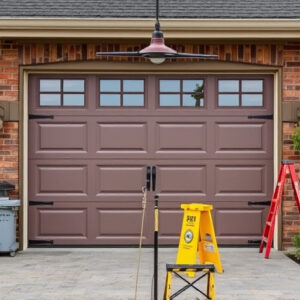GE Microwave Maintenance: Troubleshooting and Repair Guide
When troubleshooting issues with your GE microwave, start by accurately identifying the problem, whe…….

When troubleshooting issues with your GE microwave, start by accurately identifying the problem, whether it's not turning on, insufficient heating, or displaying error messages. Check the power source and outlet functionality first. If the microwave powers on but isn't working as expected, inspect the door seal for wear or damage. For heating issues like lack of heat or uneven heating, examine the magnetron and its power supply, especially if the internal light is weak. Error codes can be resolved by consulting the user manual. Routine maintenance and early issue detection are vital to keep your microwave running smoothly and prevent severe malfunctions.
For common issues like a microwave that won't turn on or one that heats food improperly, perform a visual inspection for external damage or blockages, ensure the door seal is intact and clean, and check the turntable for obstructions or damage. If the keypad stops responding due to spills, clean it thoroughly. If these steps don't resolve the problem, professional assistance is recommended.
Before attempting any repair, prioritize safety by using tools like a Phillips screwdriver, a flat-blade screwdriver, a multimeter, needle-nose pliers, and a soldering iron, along with personal protective equipment such as safety glasses and insulated gloves. Always ensure the circuit breaker or fuse is off if dealing with a hardwired microwave. Work in a well-lit area without metallic objects and never attempt a repair if you're unsure or feel unsafe; professional help should be sought instead. Adherence to the specific service manual for your GE microwave model is essential for accurate guidance and safety throughout the repair process.
When the convenience of your GE microwave falters, a quick repair can restore its efficiency, ensuring your kitchen remains a hub of culinary creativity. This article delves into the common issues that arise with GE microwaves, providing a comprehensive troubleshooting guide to address these challenges. We’ll equip you with the essential tools and safety measures required for effective repairs, tailored specifically for various GE models. Whether facing a spark or a silent operation, our detailed repair steps aim to empower you with the knowledge to maintain your microwave’s optimal performance.
- Diagnosing Common Issues with GE Microwaves
- Step-by-Step Troubleshooting Guide for GE Microwave Problems
- Necessary Tools and Safety Precautions for Repairing a GE Microwave
- Detailed Repair Steps for Specific GE Microwave Models
Diagnosing Common Issues with GE Microwaves

When encountering issues with your GE microwave, pinpointing the problem is the first step toward a resolution. Common malfunctions can range from the microwave failing to power on, not heating food properly, or displaying error codes. To diagnose these issues, start by checking the power source to ensure the microwave is receiving electricity and that the outlet is functioning correctly. If the microwave powers on but isn’t operating as expected, inspect the door seal for any signs of damage or wear, as this can prevent proper function. A faulty door seal may also be the culprit if your GE microwave is sparking or making unusual noises.
For problems related to heating, such as the microwave not heating food or heating it unevenly, examine the magnetron, which generates the microwaves. If the light inside the microwave isn’t functioning or is dim, this could indicate a problem with the magnetron or its power supply. Additionally, if your GE microwave is displaying error codes, refer to the user manual for specific code meanings and potential solutions. Common issues like these can often be resolved by replacing parts such as the diode, capacitor, or the magnetron itself. Regular maintenance and prompt attention to warning signs can help prevent more significant failures and keep your GE microwave functioning efficiently in your kitchen convenience arsenal.
Step-by-Step Troubleshooting Guide for GE Microwave Problems

When encountering issues with your GE microwave, a step-by-step troubleshooting guide can help identify and resolve common problems effectively. Begin by examining the microwave’s exterior for any visible signs of damage or foreign objects that might be interfering with its operation. Ensure the door seal is intact and clean; a faulty seal can prevent the microwave from functioning properly. If the appliance fails to turn on, check the power cord connection to the outlet and inspect the fuse for any blown elements.
Should the microwave power but not heat food as expected, consider if the correct settings are selected. The preset cooking options on a GE microwave are calibrated to deliver specific wattage levels; incorrect settings can result in inadequate heating. If the microwave is heating unevenly, the turntable may need realignment or replacement. To do this, carefully remove the turntable and inspect it for any obstructions or damage. If the turntable rotates but food isn’t heating evenly, the issue might lie with the motor or the baffle. In such cases, consulting the user manual for specific troubleshooting steps related to the turntable mechanism is advisable. Additionally, if the keypad buttons are unresponsive, try cleaning any spills or residue that may have affected their functionality. If these steps do not resolve your microwave’s issue, it may be time to contact a professional for further assistance.
Necessary Tools and Safety Precautions for Repairing a GE Microwave

When addressing issues with your GE microwave, having the right tools and observing safety precautions are paramount to ensure a successful repair. Essential tools for the job typically include a Phillips screwdriver, a flat-blade screwdriver, a multimeter for electrical testing, needle-nose pliers, and possibly a soldering iron if a component needs re-soldering. Additionally, you’ll need safety glasses to protect your eyes from any debris or sparks, insulated gloves to handle electrical components, and a voltage detector to ensure that the microwave is powered down before beginning work.
Before attempting any repairs, it’s crucial to unplug the microwave from its power source and ensure that all utility connections are disconnected to prevent electric shock. If the microwave is hardwired into your kitchen’s electrical system, confirm that the circuit breaker or fuse corresponding to the microwave’s circuit has been switched off or removed, respectively. Work in a well-lit area and ensure that your hands are clear of any metallic objects to prevent the risk of electric shock. Safety should always be your top priority; if at any point you feel uncomfortable with the repair, it’s advisable to contact a professional technician.
Detailed Repair Steps for Specific GE Microwave Models

When addressing issues with specific GE microwave models, it’s crucial to identify the exact model for detailed repair steps. This is because various models may have distinct components and mechanisms. For instance, a common problem is when the microwave fails to operate or power on. To troubleshoot this, begin by checking if the microwave is plugged in properly and if the circuit breaker has tripped. If the appliance is powered but not responding, inspect the high-voltage cap and diagnostics board for any visible damage or loose connections. Should these components be intact, proceed to test the function of the main control board by using a multimeter to ensure there is continuity where expected.
For issues related to the microwave’s keypad not responding, start by removing the outer panel to access the keypad assembly. Once accessible, look for any disconnected or loose wires that may be causing the problem. If the wiring appears secure, examine the keypad itself for any signs of wear or damage. A damaged keypad often requires replacement. After ensuring all connections are tight and the keypad is functioning, reassemble the panel and test if the issue has been resolved.
When dealing with a microwave that isn’t heating food properly, it could be due to a faulty magnetron or diode. To replace the magnetron, which may be the source of the problem, disconnect the power and remove the top panel, microwave tray, and turntable. Locate the magnetron and follow the service manual’s instructions for removal and installation of a new one. Similarly, if a shorted diode is suspected, it will also require replacement following careful disassembly and attention to safety precautions, such as wearing insulated gloves and using a multimeter to confirm the fault.
In all cases, referencing the specific service manual for your GE microwave model is essential. It provides detailed diagrams and wiring schematics that are invaluable during disassembly and repair. Always ensure you have the correct tools and parts on hand before beginning any repair to avoid further complications. If at any point you feel uncomfortable or unsure about proceeding with a repair, it’s advisable to contact a professional technician for assistance.
repairing a GE microwave can be a straightforward task with the right guidance. This article has equipped you with the knowledge to diagnose and address common issues, offering a comprehensive troubleshooting guide and safety precautions tailored for your GE model. By following these steps, you can maintain the convenience and efficiency of your kitchen appliance without the need for professional assistance or premature replacement. With these skills in hand, your GE microwave is likely to continue serving you well for years to come.







